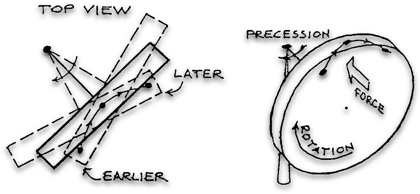It’s easy to notice when you’re procrastinating. When yours truly scores
34⁄34 on a typeface recognition
game when he’s supposed to be
either working or writing letters, he realises that there are more
constructive things to be doing. Doing something about it, on the other
hand, often proves to be rather harder.
So, what better to do as redemption than take up an old and
oft-neglected habit: writing. I’m resurrecting a weblog that has existed
in many forms and places, with as little fanfare as possible.
My latest love is Javascript, which will confuse those who saw JS coded
back in the bad old days of the web, but which will make perfect sense
to those who’ve taken to time to understand the language. More on that
later, I guess.
So, to set the scene: I’m currently a week or so from the end of my
Easter vacation, about to start my first exam term at university in
Cambridge. So far this holiday I’ve spent a week working on a piece of
software called ScanBooker for the Appropriate Software
Foundation, primarily as a visual
designer, but this has stretched significantly into front-end coding
(see aside →). ScanBooker is scheduling software for research MRI
centres, which is currently being developed for use at the Medical
Research Council’s Cognition and Brain Sciences
Unit in Cambridge, but which will, we
hope, be used in a number of research (and perhaps even clinical) MRI
units across the world.

I should have clarified that Scanbooker is a (relatively) long-term
project. I’ve been working on it for a good six months now.
After that, I spent a 55-something hour week working on a new project:
Microfacts. Microfacts is a concept
that I’ve found surprisingly difficult to explain in person, so I
suspect I shan’t do much better in text. Think mini-Wikipedia meets
slideshows meets…Google Maps. Not helping? I thought not. I’ll leave you
to work out what it’s all about from the website, but will note the most
amusing part of my work that week. I decided early on that the front-end
behaviour would be much easier to manage in the long run if it had some
kind of pattern to it. ScanBooker’s front end was fairly
object-oriented, having wedged Javascript’s prototypal inheritance
patterns into something resembling classical inheritance with the help
of Mootools, and one particular class—an
Event Manager that I’d written to look after binding event actions to
particular DOM elements—looked awfully like it was a Controller, missing
its Model and its View. (If this isn’t making any sense, the usual
advice is to check
Wikipedia.) To cut
a long story short, the end result is that for Microfacts, I implemented
MVC in Javascript!
A new and exciting thing! Github is the first code
hosting website that really gets the people aspect of DVCS right. If you
want to learn more about git itself, visit its
homepage, or check out Linus Torvalds’s
talk at Google about his
amazing creation.
Anyone who is {excited, appalled, worried} by the above idea should
check out the git
repository—my
botched extraction of the MVC code from the Microfacts source. If you
want to help develop it a bit further (check out the TODO
list) please
do fork the project on Github, or, if you don’t do git, download a
tarball and email me with your wonderful patches!
And then, the exciting work at an end, I returned home to Cornwall,
nominally to spend a couple of weeks doing academic work: revision, past
papers, a Head of Class Lab Report. Unfortunately, while I’ve done a
fair bit of all this, I haven’t exactly done as much as I hoped I’d do.
Gulp. The lab report is missing most of a discussion and a conclusion,
and I feel like I should rewrite large chunks of my introduction to the
theory section as well, having had something of a revelation with
respect to understanding gyroscopes in the past couple of days. (Yes,
the lab report is about a gyroscope.) I feel I should perhaps share this
revelation, on the off chance that you ever have to write a lab report
about gyroscopes. =)
I’ve also got hold of a copy of the fantastic 1974 Royal Institution
Christmas lecture given by Eric Laithwaite. Some amazing (and dangerous)
demos, as well as horrific 70s hairstyles in the audience! I’ll try
and upload this as soon as I clarify the rights.
Put simply, I didn’t understand how gyroscopes worked. I could write
down all the equations necessary to get a good mark in my lab report,
but I had no intuitive conception of what made them work, specifically
why a precessing gyroscope opposed a couple about a fixed point on its
axis of rotation. There was no doubt that it did: the fact that a
nutating gyro looked an awful lot like a swinging pendulum assured me of
that, but why?
As is so often the case, understanding came from a single diagram. As is
almost as often the case, the perpetrator of said diagram was Richard
Feynman.

The diagram highlights the fact that any given point on the outer edge
of a precessing gyroscope flywheel travels in a curve, accelerating
outwards from the fixed point. From that single observation, all you
need to understand the behaviour of the gyroscope is Newton’s third law:
For every action, there is a reaction equal in magnitude and opposite
in direction.
That reaction is responsible for the force on the upper half of the
gyroscope. You can easily draw a similar diagram for a point travelling
round the lower half of the gyroscope, and one sees that the reaction
force must act to push the lower half of the gyroscope in the opposite
direction, i.e. outwards. Suddenly we’ve got a couple acting about the
fixed point! I thought that was rather neat.
So, procrastination done, I should probably get back to work…